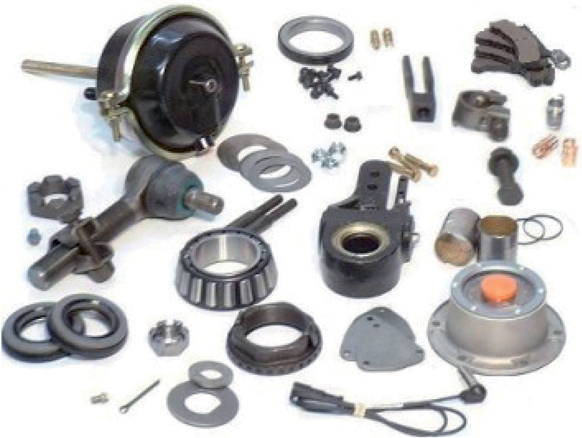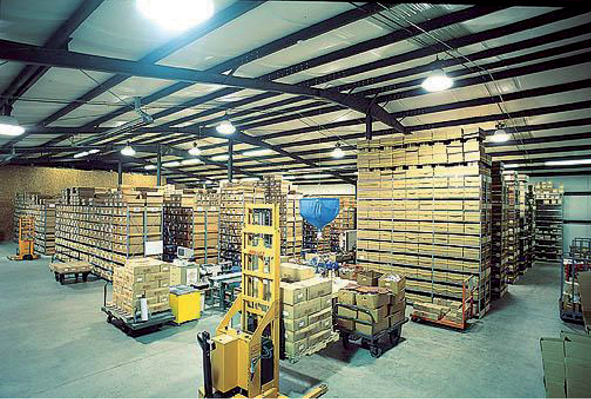By S. Ramachandra, Managing Partner, Littler Associates
 The auto parts aftermarket industry is experiencing significant challenges in serving the needs of vehicle owners given the proliferation of models and an explosive growth in part numbers. Managing this complexity is further compounded by the fragmented nature of the auto parts retail environment and legacy practices in distribution.
The auto parts aftermarket industry is experiencing significant challenges in serving the needs of vehicle owners given the proliferation of models and an explosive growth in part numbers. Managing this complexity is further compounded by the fragmented nature of the auto parts retail environment and legacy practices in distribution.
Leaving aside small volume niche models that are served through OE dealerships, all other vehicle parts programs face the same challenges in ensuring they reach parts that are required to the vehicle owner at the time and place needed. This is equally applicable to OE service parts programs and independent aftermarket programs by component manufacturers in their brand or distributor brands.
The key to managing the challenge is deciphering the critical success factors for a parts program as under:
– Achieving an adequate scale of operations in serving a vast base of retailers with a rich enough basket of parts.
– Ensuring service response in supporting demand.
– Managing working capital to achieve a high turnover ratio.
Innovative technology can provide this industry the solutions needed to succeed in this environment.
 The need to reach parts to retail locations in a landscape that is constantly evolving means managing a sales force that is distributed. These field personnel have limited visibility to stock and often struggle to cope with enquiries for a vast number of parts.
The need to reach parts to retail locations in a landscape that is constantly evolving means managing a sales force that is distributed. These field personnel have limited visibility to stock and often struggle to cope with enquiries for a vast number of parts.
Use of e-catalogues and sales force automation solutions permitting instant retrieval of stock/price/credit status information will boost sales force productivity. That the same solution can be extended to track and optimize sales routes is an added advantage.
 If programs have to cope with increased variety of parts, this is ultimately the only way to go. Current manual or legacy systems have just too much scope for errors and delays. If the FMCG and beverage industry can adopt this, should the auto parts industry be far behind?
If programs have to cope with increased variety of parts, this is ultimately the only way to go. Current manual or legacy systems have just too much scope for errors and delays. If the FMCG and beverage industry can adopt this, should the auto parts industry be far behind?
Incorporation of instant order booking with available to promise feature on hand-helds and low-cost sms-based technology solutions can provide distributed access to order fulfilment for dealers and retailers eliminating uncertainty of parts availability for sale.
Knowledgeable sales persons who can match applications to parts will dramatically improve service in the field. Investment in e-learning that permits self-paced, flexible learning by sales persons in the field is already a norm in the pharma industry and can be replicated if vehicle and parts manufacturers come together.
 The auto parts industry has almost resigned itself to accepting 20-25 per cent of stock as obsolete or slow/non-moving. It does not however have to be that way. Nor is it axiomatic that the only way to deal with stock pile-up is to have periodic fire-sales to liquidate material or operate with simplistic rules that force write-down of over 180 days’ old stocks. Smart warehousing with proper warehouse management systems to store, locate and retrieve parts, aggregated inventory with logistics that reaches the material to stock points or customers on demand can greatly reduce the problem.
The auto parts industry has almost resigned itself to accepting 20-25 per cent of stock as obsolete or slow/non-moving. It does not however have to be that way. Nor is it axiomatic that the only way to deal with stock pile-up is to have periodic fire-sales to liquidate material or operate with simplistic rules that force write-down of over 180 days’ old stocks. Smart warehousing with proper warehouse management systems to store, locate and retrieve parts, aggregated inventory with logistics that reaches the material to stock points or customers on demand can greatly reduce the problem.
 Use of proper demand-modelling and use of rule-based reordering instead of gut-feel based order placement can improve inventory turnover ratios while simultaneously improving service levels.
Use of proper demand-modelling and use of rule-based reordering instead of gut-feel based order placement can improve inventory turnover ratios while simultaneously improving service levels.
Third-party logistics service providers too must think of adapting the existing solutions like milk-runs, supply to demand, and hub & spoke models to best serve this industry. With GST likely to be introduced, many earlier assumptions and ways of working will have to change any way.
Evaluating credit-wort hiness of retail accounts again is mostly a trial and error (mostly error!) based exercise that can definitely do with formalised systems if industry players are willing to share data and syndicate efforts. Businesses with superior credit rating will be able to differentiate themselves and ensure higher service levels for their customers.
hiness of retail accounts again is mostly a trial and error (mostly error!) based exercise that can definitely do with formalised systems if industry players are willing to share data and syndicate efforts. Businesses with superior credit rating will be able to differentiate themselves and ensure higher service levels for their customers.
The auto parts industry is ripe for change. There is huge opportunity for players in the enterprise systems space, mobile app developers, 3PLs and others. Is anyone willing to start the effort to develop a credit rating product for retailers?